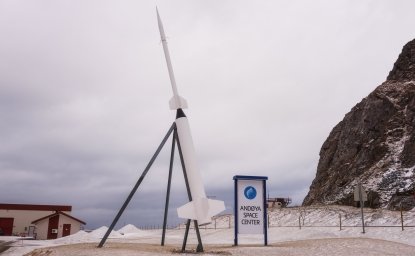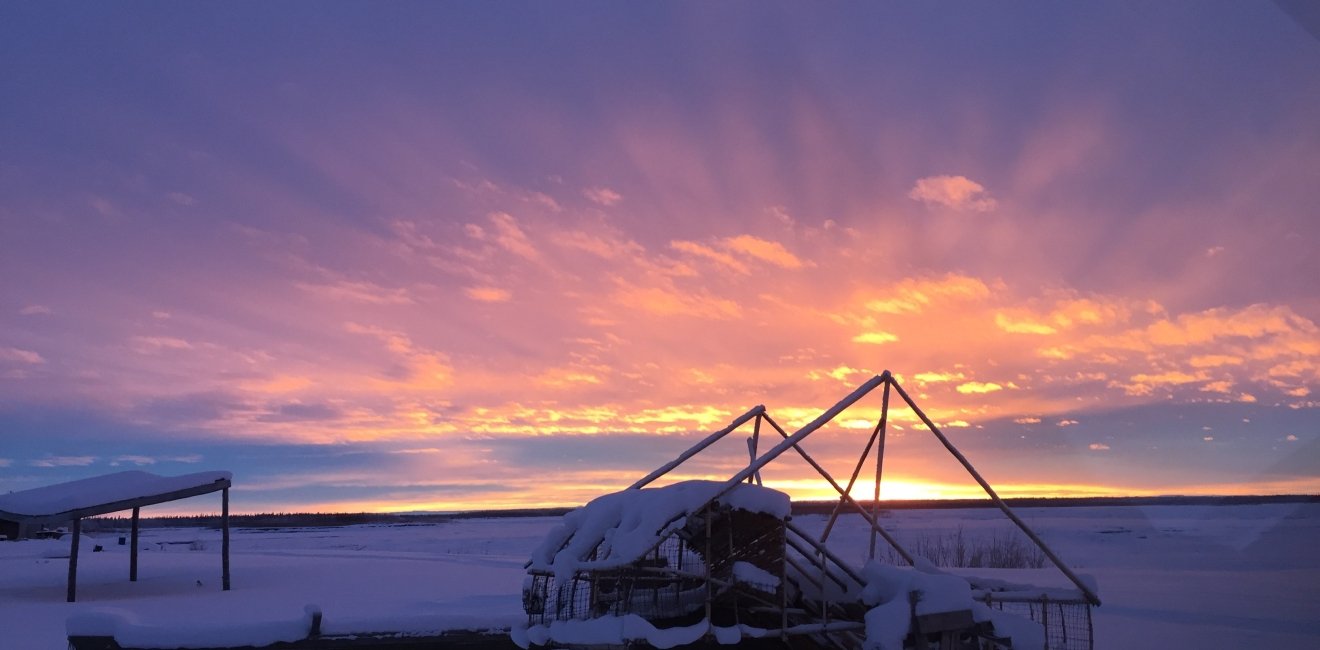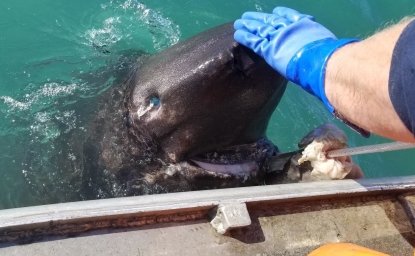
A blog of the Polar Institute
When the Arctic Council i s functioning normally – something that we have not seen since many of its activities were “paused” as a result of the Ukraine conflict – it provides an important and indeed unique forum for cooperation between Arctic Indigenous Peoples and the eight states that are members of the Council. As an Indigenous group leader and a former diplomat, respectively, the two authors have witnessed first-hand the value of that cooperation as well as its limitations. We recognize the difficulties posed to the Indigenous Peoples when the Council doesn’t function, and the promise it brings when it does.
In this article, we offer some reflections on the relationship between the Council and its Permanent Participants, what it has achieved in the past, and where it might lead in the future.
Establishment of the Arctic Council
The Arctic Council was established in 1996 based on a proposal by Canada to transform the existing Arctic Environmental Protection Strategy into a high level forum focused on environmental protection and sustainable development. Canada’s initiative was conceived of and promoted by its Inuit leaders, in particular Mary Simon (who is now Canada’s Governor General). The idea was to bring together the eight states with territory above the Arctic Circle (Canada, Denmark, Finland, Iceland, Norway, Russian Federation, Sweden, the United States) with major Indigenous organizations. Within the Council, these organizations, referred to as the Permanent Participants, and states would sit as equals, although formal decision-making resides with the states. In 1996, the original Permanent Participants were the Inuit Circumpolar Conference (now the Inuit Circumpolar Council), the Saami Council, and the Association of Indigenous Minorities of the North, Siberia and Far East of the Russian Federation (now known as the Russian Association of Indigenous Peoples of the North – RAIPON). They have been joined by the Aleut International Association, the Arctic Athabaskan Council, and the Gwich’in Council International.
The two-year chairmanship of the Council rotates among the states, with a meeting of ministers held at the end of the chairmanship. The work of the Council is led by the Senior Arctic Officials from each state and the senior representatives of the Permanent Participants, and its main activities take place in six working groups as well as expert groups and ad hoc bodies established to tackle particular issues.
A historic success
The relationship established via the Arctic Council between states and indigenous representatives is unique in diplomacy. While it is usual in international organizations to create a category of observers, including indigenous groups and non-governmental organizations, who can come to meetings to advise states, comment on the proceedings and watch what occurs, the Permanent Participants are not observers. They are an integral part of the institution. That states and the Permanent Participants sit together as equals in a multilateral organization is not something found elsewhere.
The Permanent Participants (“PP’s” in Arctic Council parlance) ensure that the views of the Arctic Indigenous are a vital part of the work of the Council, providing a more direct and effective perspective than if the states relied on consultations with their Indigenous citizens for information and guidance. The PP’s also represent in most cases a cross-section of nationalities, which provides cross-border perspectives. The Aleut International Association (AIA), for example, consists of membership in the United States of America and Russia. The Inuit Circumpolar Conference (ICC) consists of membership in Canada, the Kingdom of Denmark, the United States of America, as well as Russia. In the current political climate it’s important that we collectively understand there is more than one avenue of diplomacy.
Not everyone appreciates why Indigenous participation is important in a body like the Arctic Council. One reason is that the Arctic Indigenous over the centuries have built up knowledge about conditions in the Arctic and how to thrive there, often in naturally sustainable hunting and fishing economies, and always in deep connection with nature. Their ancient knowledge is an essential element for their continued survival in the region, and their contemporary understandings about the changes they’ve experienced in the Arctic are needed for sound public policies for the region. After all the Arctic is their homeland, they have human rights and are the essential stakeholders in the region, and often, though not always, comprise the vast majority of the inhabitants of the area. Thus, their participation provides substantial value that the governments of the states (national and subnational) don’t provide.
The diversity of the Indigenous representation within the Council is also important. Although many in, and outside, the Arctic think primarily of maritime matters given the importance of the Arctic Ocean, many Indigenous live far away from coastal areas. In these inland communities, their lives focus on non-maritime concerns, including these days the impacts on infrastructure caused by thawing permafrost, policies with implications for managing wildfires, the health of rivers and streams, and the fish that are found there. The Gwich’in live in-land and provide a perspective that may be different from coastal Indigenous brethren. The Arctic isn’t just about the sea ice or shipping lanes. Indeed, much of the story of the Arctic can’t be told as a maritime tale; for example, the setting of the Arctic and subarctic includes the largest forest on planet Earth, the boreal forest.
Indigenous-led Arctic Council Projects, Participation and Impact
Gwich’in Council International has two projects centered on impacts to the boreal forest from wildland fire within the Arctic Council currently: one in the Conservation of Arctic Flora and Fauna Working Group (CAFF) and the other in the Emergency Preparedness Prevention and Response (EPPR) Working Group. Both projects were spurred by the devastating fires Gwich’in communities, many north of the Arctic Circle, have already endured. Some 64 percent of the Yukon Flats National Wildlife Refuge, home to the Gwich’in, have burned since 1960. This is the third largest wildlife refuge in the United States and is roughly five times the size of the State of Delaware. This area was established as a refuge for its unique status as a vast Arctic wetland, with much of it covering permafrost soils (permanently frozen soil rich in sequestered greenhouse gases), much of which has been impacted by the wildfires in the Arctic. Some four Delawares worth of land have burned within Gwich’in homelands alone.
The Gwich’in projects at the Arctic Council hope to draw attention and science to the Arctic to better understand the changes to wildfire in the Arctic and its impacts that they have already seen, as well as to draw international cooperation and resources to the issue. Northern latitude forests and Arctic tundra have removed tremendous amounts of CO2 from the atmosphere over time, and that carbon has been stored (sequestered) in plants and especially soils. For example, circum-boreal forests contain more carbon than any other forest types on Earth (1,095 billion tons of carbon), and permafrost soils (found in both northern boreal and Arctic regions) store up to of 1,580 billion tons of carbon. To put these amounts into perspective, the carbon stored in permafrost is twice what is currently in the atmosphere (860 billion tons of carbon), meaning that permafrost thawing or burning from wildfires could release that stored carbon back into the atmosphere as the greenhouse gas CO2, accelerating global warming.
The situation is terrifying and clear: the largest terrestrial stores of carbon on the planet are flammable, and we have increasingly seen large mega fires in the north burning millions of acres, and releasing vast and unquantified amounts of greenhouse gases. In addition, permafrost regions have historically served as a natural insulator keeping the sequestered greenhouse gases in soils contained, but, as the Arctic warms the vast Yukon Flats and other areas in the far north have shown this is less true now than before. As Gwich’in Council International have publicly stated their concern, the region has warmed three times as fast as the rest of the globe, and there is an acute need to better understand how much of the carbon stored in our northern ecosystems will be released to the atmosphere, and how fast will this occur given rapid Arctic change.
The Arctic Council is critically important for the space it creates for Indigenous perspectives, and leadership on issues like wildfire response in the Arctic. GCI’s projects create international space for cooperation and awareness on critical issues like the climate driving impacts of wildland fire in the Arctic and subarctic regions. The CAFF project, Arctic Fire, hopes to expand our understanding of wildland fire ecology in the Arctic, exploring Indigenous knowledge on the topic, and creating space for experts around the circumpolar north to discuss these timely issues. The GCI project at EPPR, Circumpolar Fire, evaluates the legal frameworks of current wildfire cooperation between Arctic States and has proposed that new areas of cooperation and agreements may be warranted in the current climate of Arctic wildland fire. Naturally, these are only a couple of the examples of the many important projects Arctic Indigenous Peoples are engaged in at the Arctic Council.
The Indigenous groups also in many cases represent peoples who live in different countries. The Gwich’in communities are located in both Canada and in the United States. Thus, the perspective of Indigenous groups can be broader than found in a single nation, and can point to new areas of needed bilateral cooperation between neighboring states that can sometimes be forgotten in southern capitals. For example, the Indigenous groups have led efforts to focus on the importance of removing obstacles to travel across borders where families of particular tribes or groups live in different countries. Only recently, President Biden and Premier Trudeau recognized the need to improve conditions for visa-free travel between the United States and Canada to aid contacts between these families, and it was Indigenous groups who have pressed for this over many years. The complex nature of the Jay Treaty and Canadian immigration policy as they affect Indigenous Peoples are bound by a particular reality: these are one people, one language, families, who have lived and governed their own areas for tens of thousands of years, who have been separated by relatively recently established borders, and they have the right to continue their relationships.
The Indigenous are close to the land and nature and have a direct understanding of what is going on in the Arctic, especially environmental change which is at the heart of the issues the Council cares about. Whether it is intricate changes to sea ice, plant, animal, insect life, or ecosystem-wide rapid changes like wildfire, the Indigenous peoples are vested stakeholders in the Arctic who are keen and longtime observers of the region, and their knowledge is integral in getting things right for the Arctic.
The history of the Council has demonstrated its value as a forum that fosters communication between Indigenous groups and the central governments of the states. For various reasons, relationships between the Indigenous and ministries of governments, as well as domestic political processes, can be difficult. At times, the Permanent Participants can reach capitals through statements in the Council when other channels are not successful. On the margins of Arctic Council ministerial meetings, U.S. Secretaries of State have taken the time to have separate meetings with U.S. Indigenous leaders. In that respect, it appeared that groups representing Indigenous peoples living in the United States had more successful access to the U.S. Secretary of State than when they reach out to senior Alaskan state government officials.
The Arctic Council deliberately does not cover military issues. Because of the Ukraine conflict and resulting rise in tensions, and the expansion of NATO to include Finland, and soon Sweden, there is increasing attention given to military security issues in the Arctic. Those military security issues often decrease the attention to the core security questions of importance to Indigenous communities, such as food security, health, energy and jobs, as well as the changing environment. Focusing on the Indigenous interests helps bring the attention of states back to what is of greatest importance to the people who live in the Arctic. Further, the Indigenous people can help to draw the focus of the Arctic onto issues critical to the global community, like wildland fire in the Arctic or the shifting qualitative realities around permafrost melt and soil destabilization, that can sometimes go unseen in southern areas, or be overlooked for regional security concerns. They understand the value of their home and its qualities, and sometimes need to remind others that changes regarding it aren’t always an opportunity for others to exploit.
How could relations in the Council improve?
The Permanent Participants will always be less-well funded than the officials and experts who governments send to Council activities, but more can be done to ensure that funding for their participation is adequate and assured. Many Indigenous delegates are in effect volunteers, not paid bureaucrats like the government officials. Some have funding to travel only to a few key meetings, like those of the ministers, Senior Arctic Officials or the Sustainable Development Working Group. Funding is needed not only for individual groups, but also for the Indigenous Peoples Secretariat. Currently only two member states fund the IPS, and state contributions to Indigenous Peoples organizations often don’t reflect the value that they bring to the table.
The member state governments can work harder to ensure active communication. Many Indigenous People’s Organizations felt that the states did not adequately consult with them prior to the Council’s pause as a result of the Ukraine conflict. There was concern in the wider Arctic community about what the pause would do to Arctic Council cooperation, long valued and continued despite global geopolitics, and concern among some Indigenous People’s organizations about increased military tensions in the Arctic at a time when scientific cooperation in the region is critically important to the globe.
There are many reasons to preserve the Arctic Council as an institution despite the tensions caused by the Ukraine conflict. If the eight Arctic States cannot find an accommodation that allows them to secure the existence of the Council until the Ukraine conflict has ended, Indigenous interests will be significantly harmed. Avoiding that harm does not mean that the states other than Russia should make concessions to Russia or accept the brutal treatment of Ukraine and its people, but there needs to be a recognition that if the Council can’t continue, rebuilding it at some later time will take much time and effort, if it can be rebuilt.
Mary Simon and Canada showed great leadership in combining a country’s interests with those of Indigenous Peoples in proposing the Arctic Council. The United States can learn from this example by not only accepting the importance of Indigenous representation and Indigenous Knowledge in international relations and agreements, but by becoming advocates for these in fora outside the United States as well.
Edward Alexander is a Co-Chair and the Head of Delegation for Gwich’in Council International which represents the Gwich’in of Alaska, the Yukon Territory, and the Northwest Territory on international affairs, primarily at the Arctic Council. Evan T. Bloom is a Senior Fellow at the Polar Institute of the Wilson Center, and a former senior diplomat at the U.S. Department of State who worked on Arctic affairs. Together, the authors contribute to the Study of Environmental Arctic Change (SEARCH), a National Science Foundation-funded research collaboration bringing together Indigenous Knowledge, science, and policy.
Authors
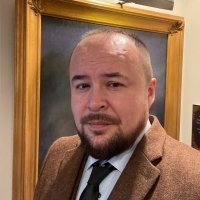
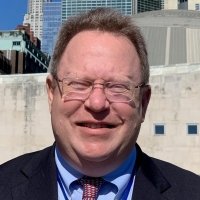
Former Acting Deputy Assistant Secretary for Oceans and Fisheries and Director for Ocean and Polar Affairs, US Department of State

Polar Institute
Since its inception in 2017, the Polar Institute has become a premier forum for discussion and policy analysis of Arctic and Antarctic issues, and is known in Washington, DC and elsewhere as the Arctic Public Square. The Institute holistically studies the central policy issues facing these regions—with an emphasis on Arctic governance, climate change, economic development, scientific research, security, and Indigenous communities—and communicates trusted analysis to policymakers and other stakeholders. Read more

Explore More in Polar Points
Browse Polar Points
Greenland’s New Governing Coalition Signals Consensus
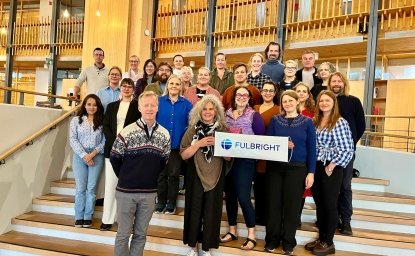
Fulbright Arctic Initiative IV Scholar at the Polar Institute
